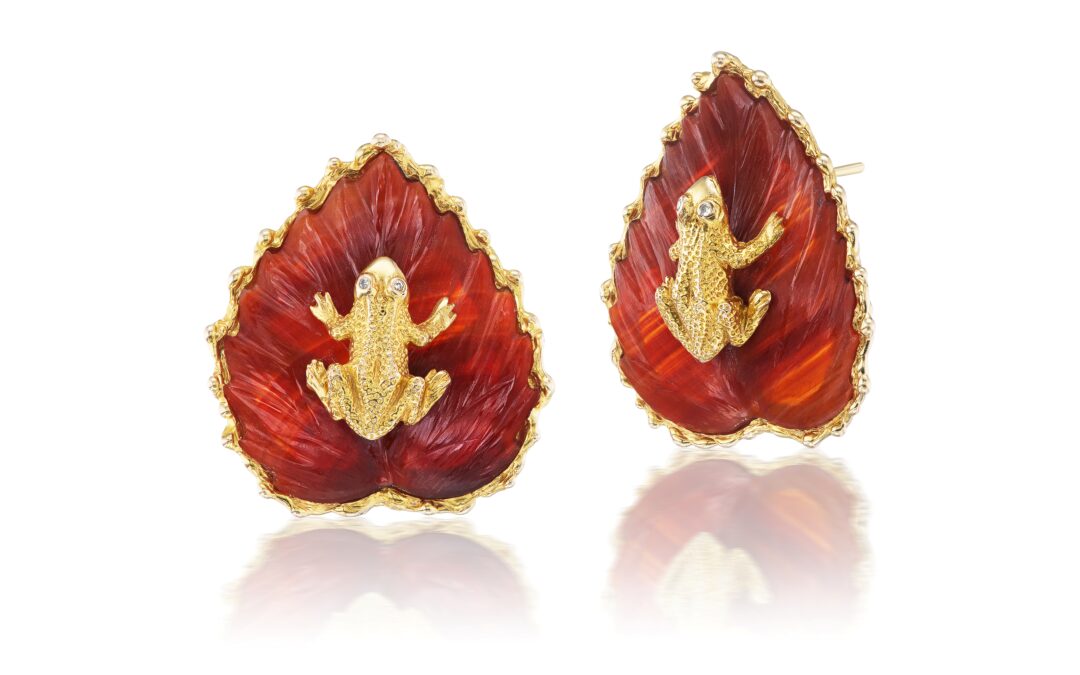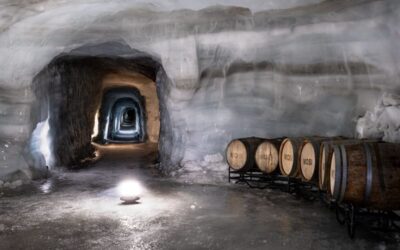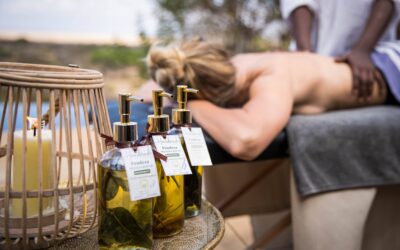In a cedar-clad Balinese tea house with a treehouse repurposed as a lapidary workshop tucked-away in Tuxedo Park, New York, is an atelier, alive with the steady tick of an antique grandfather clock and the glow of a well-used torch. There you’ll find Elisa Gilbert—Music and Art and Cornell University graduate, hard at work at her father’s old jeweler’s bench, transforming raw metal into wearable works of art. Elisa’s lineage spans four generations of watchmakers, metalsmiths, and sculptors, giving rise to pieces that marry precise engineering with a hint of whimsy. In each earring, you might sense the echoes of a silversmith’s steady hammer. In every pendant, a sculptor’s eye for form—woven through all of it, a radiant thread of feminine grace that breathes life into tradition.
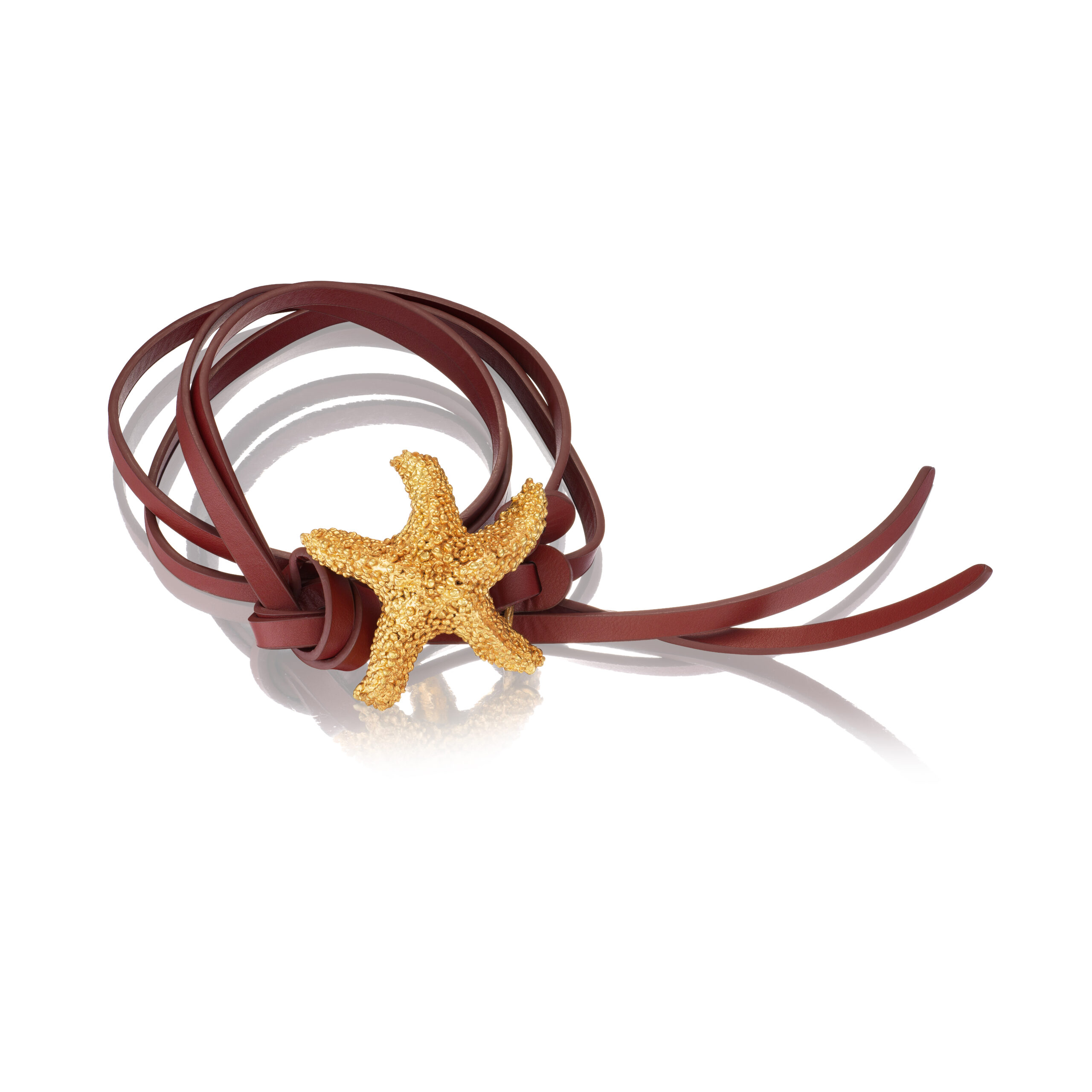
Starfish-Buckle
Transforming her history and work into a brand, Elisa created Vivienne Charles handcrafted fine jewelry—where heritage isn’t relegated to dusty nostalgia—it is the foundation for something daringly fresh. Each creation starts with a tale—and ends as a signature piece built to spark conversations under the warm hum of a cocktail party, or in the hush of a candlelit dinner. Here, precious materials aren’t just shaped; they’re coaxed into sculptural expressions of personal history.
“Vivienne Charles” itself conjures structured legacy and artistic flair—a fusion of watchmaker’s exactitude, metalworker’s craft, architect’s silhouette, and the quietly confident whisper of feminine influence. The result? Jewelry that defies simple classification: high-end yet playfully unassuming, deeply reverent of the past but wholly set on rewriting the future. Incorporate a piece in your life and feel the nod of generations gone by—a smiling wink toward the exciting life to come. Once you have a piece you too will have an heirloom that identifies with a bit of your core and will speak to the generations of your future yet to come.
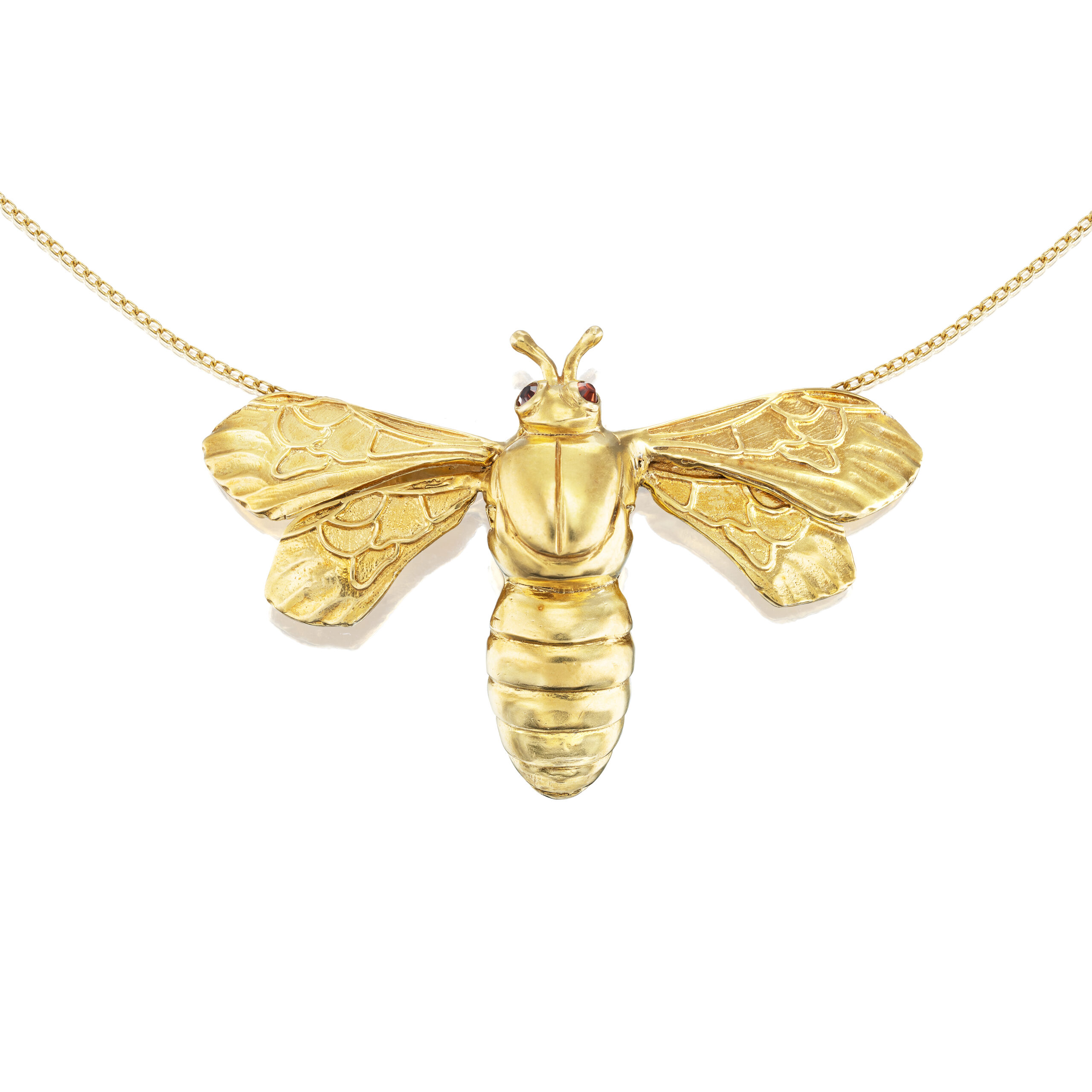
Queen-Bee-Necklace
What made you decide to pursue a career in jewelry design?
I grew up in the jewelry industry, my father and grandfather were jewelers, silversmiths and goldsmiths, and my great grandfather was a watchmaker from a time when watches were magnificent wonders. As a young adult, I worked alongside my father and grandfather, immersed in the world of fine craftsmanship and artistry. Yet, despite my deep connection to the craft, I was encouraged to pursue a more traditional and secure path—law. And so, for thirty years, I built a fulfilling career as an attorney, embracing the value and discipline of the profession.
But when my father passed, I realized something profound—the beauty, love of art, and joy of this craft, a huge part of my personal heritage, was slipping away with him. He quietly put down the family baton, and with that, I felt an undeniable pull to pick it back up. While law had given me purpose, it could never satisfy my soul the way creating something timeless and meaningful could. Beauty connects humans—across generations, across cultures, across time. I knew then that my path was not just about preserving the past but about sharing it.
I love art and sculpture and stones and metal, and love that jewelry is timeless, a means of distinguishing style and reflective of history. Jewelry design is an opportunity to celebrate artistry, and to offer the world pieces that tell stories.
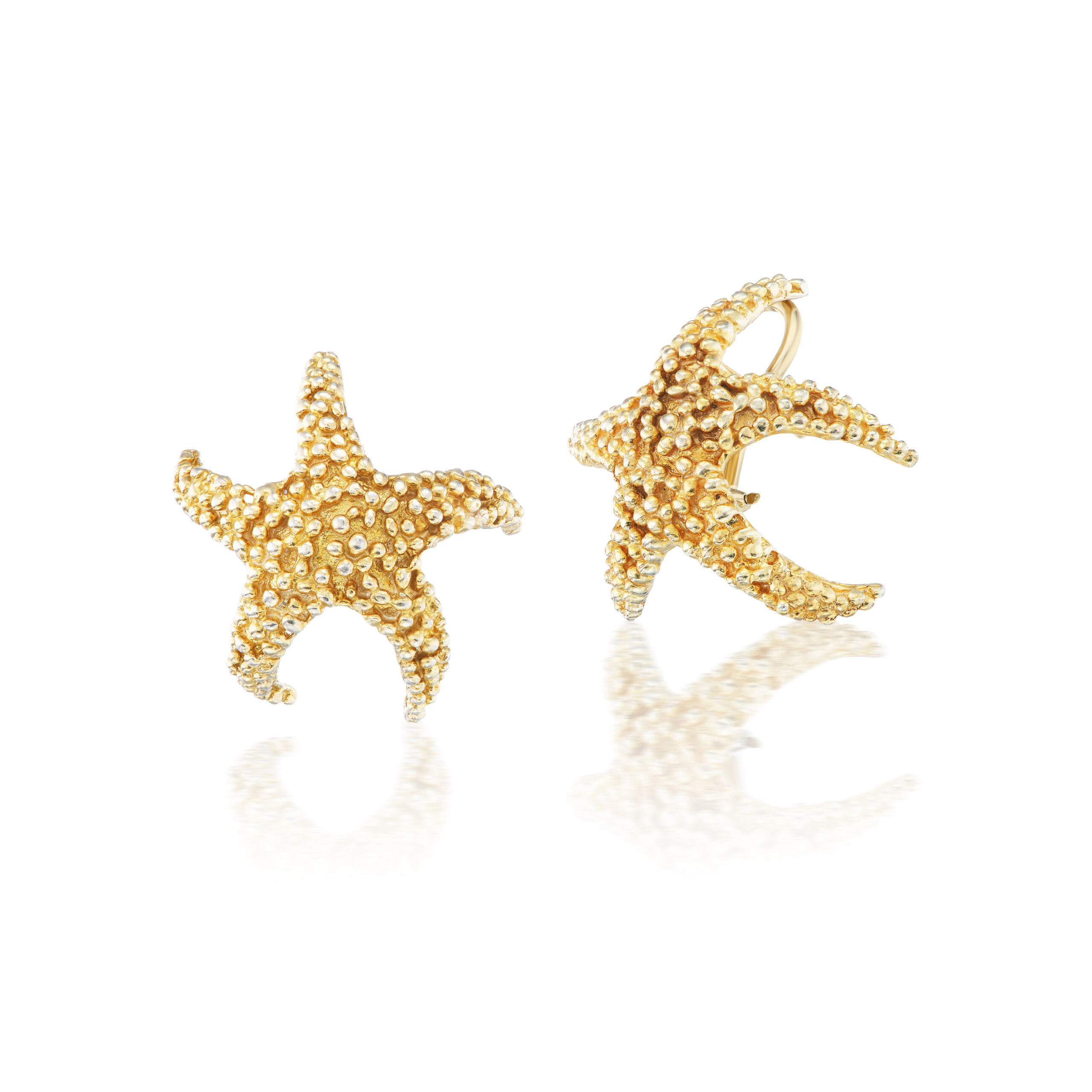
Sun-Kissed-Tidepool-Stars
What do you consider the most important facets of the jewelry industry?
The jewelry industry is vast, encompassing everything from timeless traditions to cutting-edge innovations. While modern advancements have transformed various aspects of the business, the heart of jewelry-making remains deeply rooted in heritage and craftsmanship. Despite technological changes, traditional techniques such as lost-wax casting and hand-carving continue to be practiced as they were by ancient artisans, giving jewelry a sense of permanence and cultural depth. At the same time, the industry thrives on a balance between old-world techniques and modern technology. While 3D printing, laser engraving, and digital design tools enhance creativity, the essence of jewelry remains in the hands of the artist, where craftsmanship meets imagination.
Ethical sourcing and sustainability have also become crucial facets of the industry. As consumers and businesses alike grow more conscious of environmental impact and human rights, the jewelry world has a responsibility to prioritize conflict-free gemstones, recycled materials, and transparent sourcing practices, ensuring that luxury is both beautiful and responsible. Furthermore, technology has revolutionized communication in design, with digital platforms reshaping how people discover and engage with jewelry. Social media, virtual try-ons, and immersive online experiences have allowed for a new level of connection between designers and customers, making the buying process more interactive and personal.
Ultimately, one of the most important aspects of the jewelry industry is its ability to foster exclusivity and personal connection. Jewelry is more than mere decoration—it is a symbol of life’s milestones, history, and individuality. Whether through bespoke designs, heirloom restorations, or meaningful storytelling, its true value lies in its ability to connect the past and present, the artisan and the wearer, making each piece uniquely significant.

Prince-Charming-Necklace
What do you think are the current and future trends in jewelry globally?
The global jewelry landscape is undergoing exciting shifts, blending innovation, sustainability, and a deep appreciation for heritage craftsmanship. As the industry evolves, several key trends are emerging. Currently, ethical sourcing is at the forefront, with sustainability no longer being just a buzzword but a consumer demand. Buyers are increasingly conscious of conflict-free stones, recycled metals, and the ethical concerns surrounding the occupational hazards in the industry. Additionally, bold statement pieces are making a comeback, with chunky gold chains, oversized cocktail rings, and sculptural earrings dominating runways. Jewelry is becoming more than just an accessory—it is a form of self-expression, with clients seeking artistic and conversation-starting designs.
Personalization and customization are also more in demand than ever, as people desire jewelry that feels uniquely theirs. Bespoke designs allow individuals to create pieces that hold personal significance, making them cherished heirlooms for the future. At the same time, the rigid “gold or silver” rule is fading, giving rise to mixed metals and unexpected combinations. Rose gold paired with platinum, oxidized silver with yellow gold, and the integration of raw fabrics and organic textures are gaining popularity, allowing for fresh and unconventional aesthetics.
Looking ahead, the future of jewelry is poised to merge high jewelry with art and architecture. We are moving into an era where jewelry is seen as wearable art, drawing inspiration from sculptural elements, avant-garde movements, and architectural influences. This shift blurs the line between high fashion and fine art, making pieces more dynamic and visually compelling. Alongside this, there is a growing appreciation for heirloom and vintage revival. Future collections will reflect tradition, incorporating Victorian-inspired lockets, Art Deco influences, and repurposed vintage stones in contemporary settings, emphasizing history and sentimental value.
Conversely, hyper-modern minimalism is also gaining traction, with futuristic designs featuring clean lines, invisible settings, and floating diamonds. The appeal of sleek, understated elegance is expected to continue as modern consumers embrace simplicity with a refined aesthetic. Additionally, cultural and heritage fusion is becoming a significant influence, with ancient jewelry techniques being reimagined for the modern era. Handcrafted filigree, tribal-inspired motifs, and traditional craftsmanship blended with contemporary silhouettes are bringing a rich cultural narrative into fine jewelry collections.
At Vivienne Charles, I focus on pushing boundaries while honoring timeless elegance. The future of jewelry is about balance—between tradition and technology, opulence and ethics, individuality and global influence. It’s an exhilarating time to be in this space!
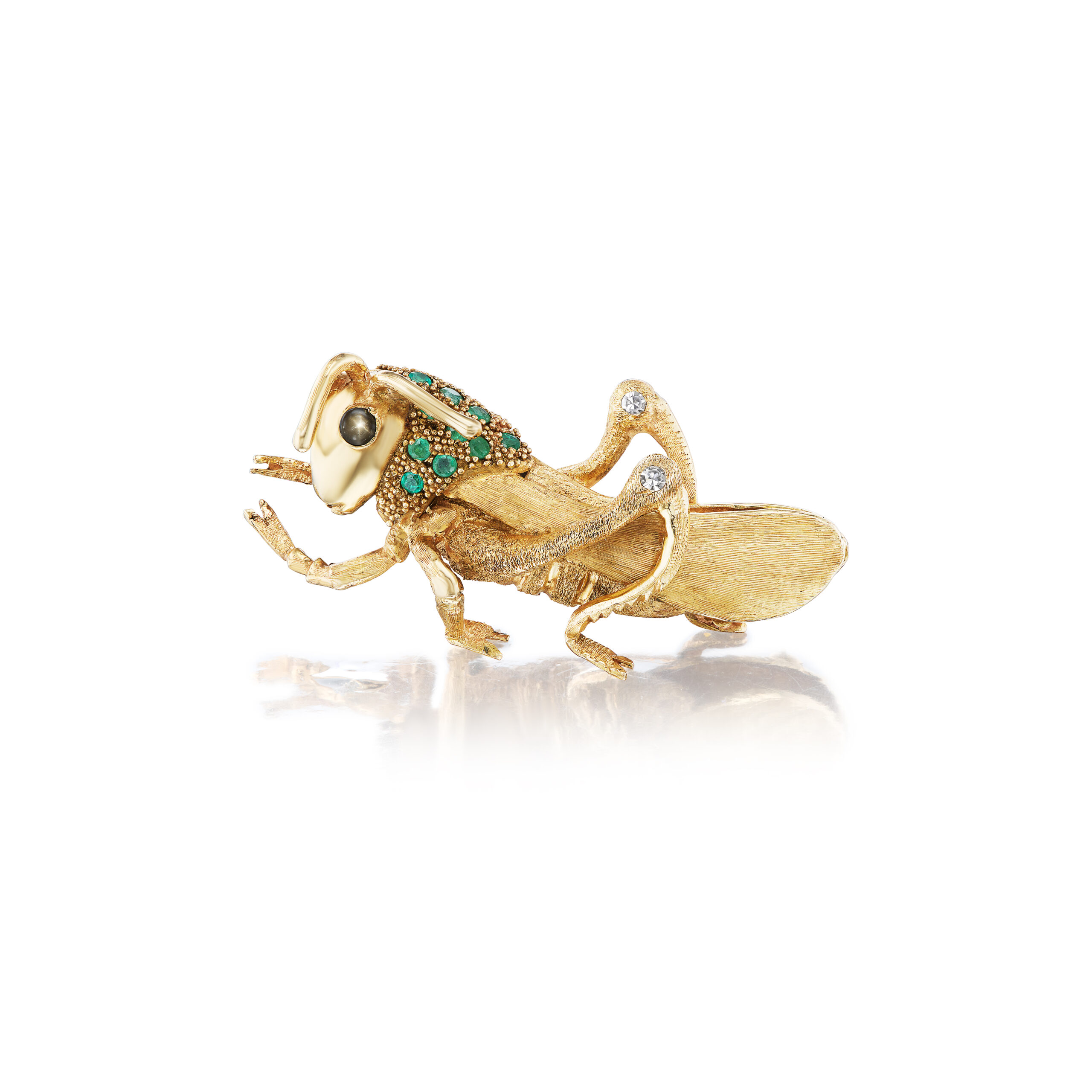
Celestial-Serenade
How do you think your education has prepared you to work in this industry?
Growing up immersed in the fine art and jewelry world, with a lineage of master goldsmiths and watchmakers on one side, and a mother who was a fashion illustrator on the other, my education was as much inherited as it was formally studied. My journey, shared with my brother who choose to pursue a more traditional fine art career is—rooted in craftsmanship, design, and history—and has given me a unique perspective that bridges tradition and innovation in the jewelry industry.
From an early age, I was surrounded by the rhythm of a jeweler’s bench—the sound of gold being shaped, the precision of stone setting, and the meticulous craftsmanship passed down through generations. Learning from my father and grandfather instilled in me a deep respect for the technical mastery required in fine jewelry. Watching my great-grandfather’s watchmaking process also sharpened my appreciation for mechanics, precision, and timeless design—qualities that I integrate into my own creations today.
Studying art provided me with a rich visual vocabulary, allowing me to see jewelry not just as an adornment but as an artistic expression with cultural significance. Whether it’s the intricate goldwork of the Renaissance, the geometric precision of Art Deco, or the organic forms of Art Nouveau, I draw inspiration from the masters of the past to create pieces that feel timeless yet contemporary.
My education in music and the arts has given me an intuitive sense of rhythm, harmony, and proportion—elements that are just as crucial in jewelry design as they are in composition. Jewelry, much like music, has a cadence, a balance, a movement. Meanwhile, my mother’s career in fashion illustration exposed me to the power of silhouette, line, and storytelling through design. I approach jewelry as a wearable art form, ensuring each piece has both a sculptural presence and an emotional resonance.
While I honor the old-world techniques I grew up with, my education has also prepared me to push boundaries. My background in fine art has encouraged me to experiment with unconventional forms and materials, while my exposure to fashion has helped me anticipate trends and understand how jewelry interacts with the body. This fusion of classic craftsmanship with a forward-thinking artistic vision is what defines my approach.
Ultimately, my education has been a seamless blend of heritage, formal training, and artistic exploration. It has prepared me not just to work in this industry, but to redefine it—creating pieces that carry the weight of history while speaking to the modern collector.
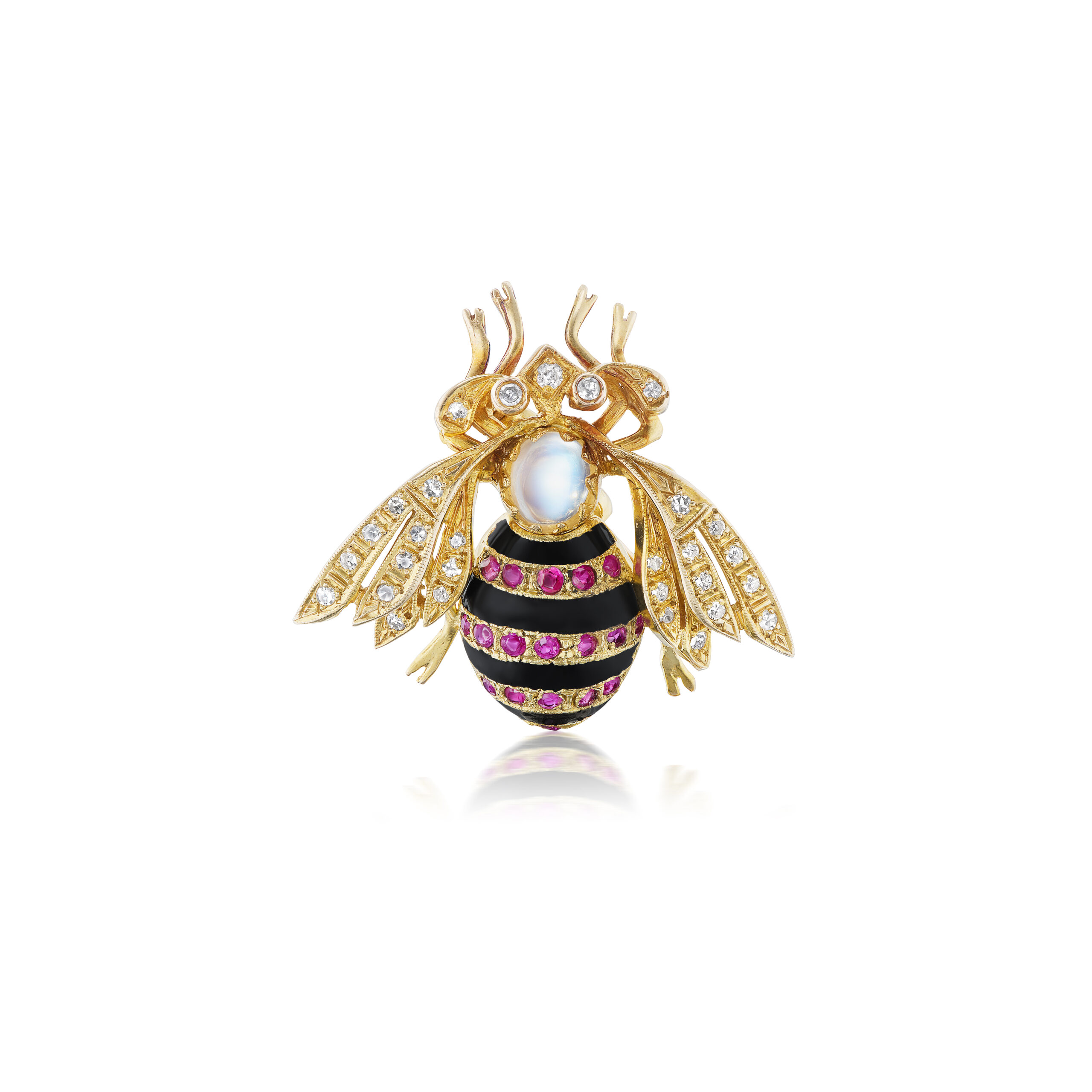
Moonlit-Bee
How would you describe your personal style?
History meets nature and nature meets art. I like to blend animals, foliage, mythology and luxury including fabric stones and metal. If it is luscious and beautiful and fun I’m on it.
What was the first piece of jewelry you ever designed?
The first piece of jewelry I ever designed was a bracelet of a sculpture of a man wearing a tricorn hat with a feather walking with a jester staff, that was cast in bronze. It was modelled and carved in microcrystalline. I was fourteen years old; it was a very heavy piece, and I learned that microcrystalline is mushy and hard to work with. Forty years have passed, and I’ve gotten a bit more practical, but practicality has nothing to do with art.
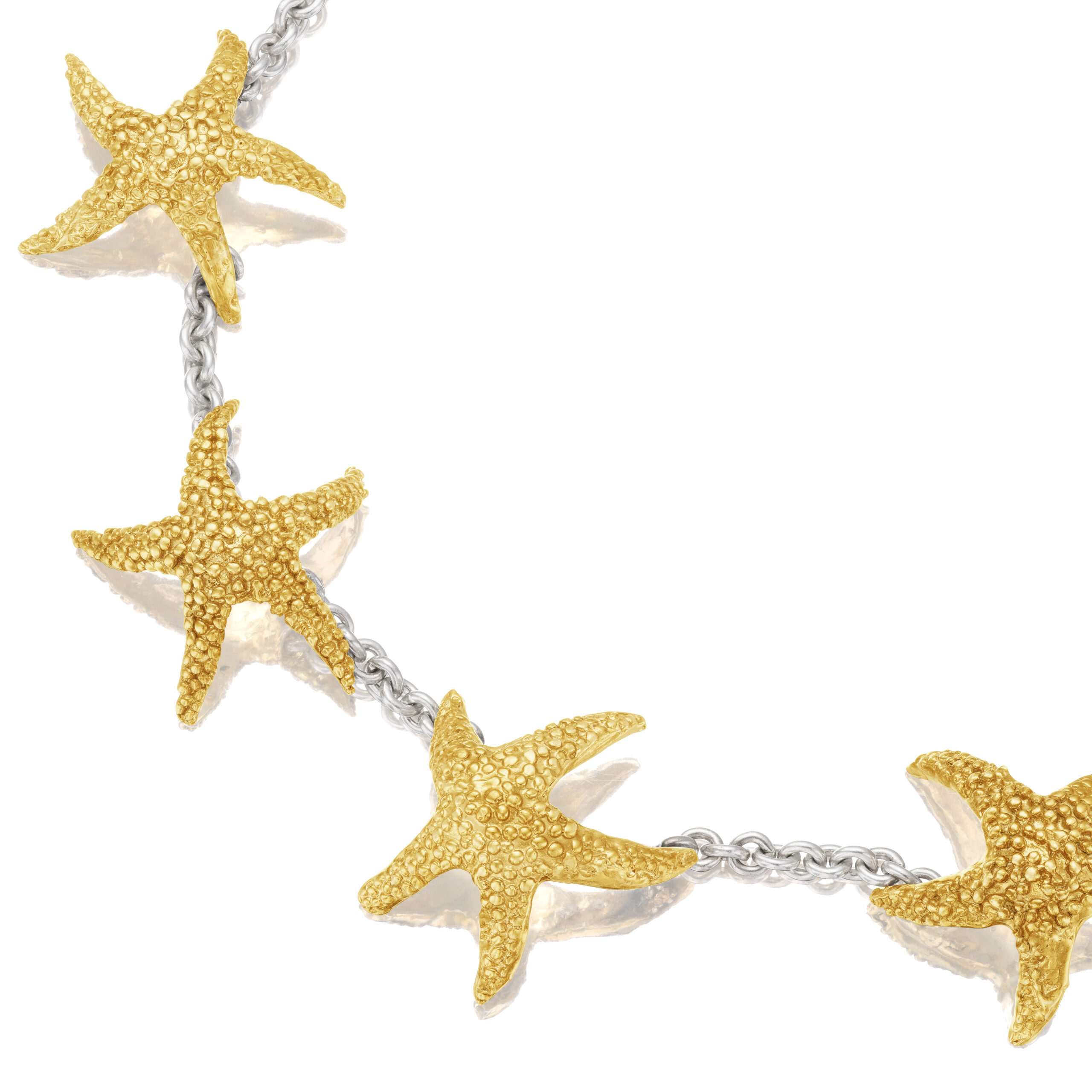
Tidal-Reverie-Starfish-Necklace
When did you realize you wanted to become a jewelry designer?
I left the field at my father’s insistence, and spent thirty years in a formal profession, I never thought for a second, I would not be a jewelry designer. But I did not return to it formally until I lost my dad.
How long does it usually take you to construct a piece of jewelry?
Sometimes they magically materialize in no less than a couple of weeks from drawing to finished object, Sometimes the idea is not initially fully formulated and takes several iterations. Sometimes designs continue to evolve. The Prince Charming necklace was born out of the desire to make a frog. He was a beautiful and fun project that initially had no jewelry objective. Over time he became an embellishment on a polished mineral sample and then his purpose came to life- and from his evolution a fairytale series is underway. The Prince Charming necklace combines hand dyed silk cords and a large chunky clasp and with his friends it is accompanied by a crown and a heart. He is the embodiment of the journey to a true love, having to kiss a lot of frogs to find your path to happiness, or as one gentleman choose to see it, for his silver anniversary as a “thank you” for having taken the time to find him.
The Prince Charming Necklace comes in gold and silver with appropriately coordinating silk cords and may be worn as a bracelet or a necklace. Other evolutions of design include size variations and contrasting metals, finishes and the inclusion of stones. My clients and friends have been enormously instrumental in assisting me in the design process. One lovely lady really wanted The Caelum Starfish Earrings but had the tiniest ear lobes ever. The Ashleigh subseries was born a line of scaled down versions of statement pieces.
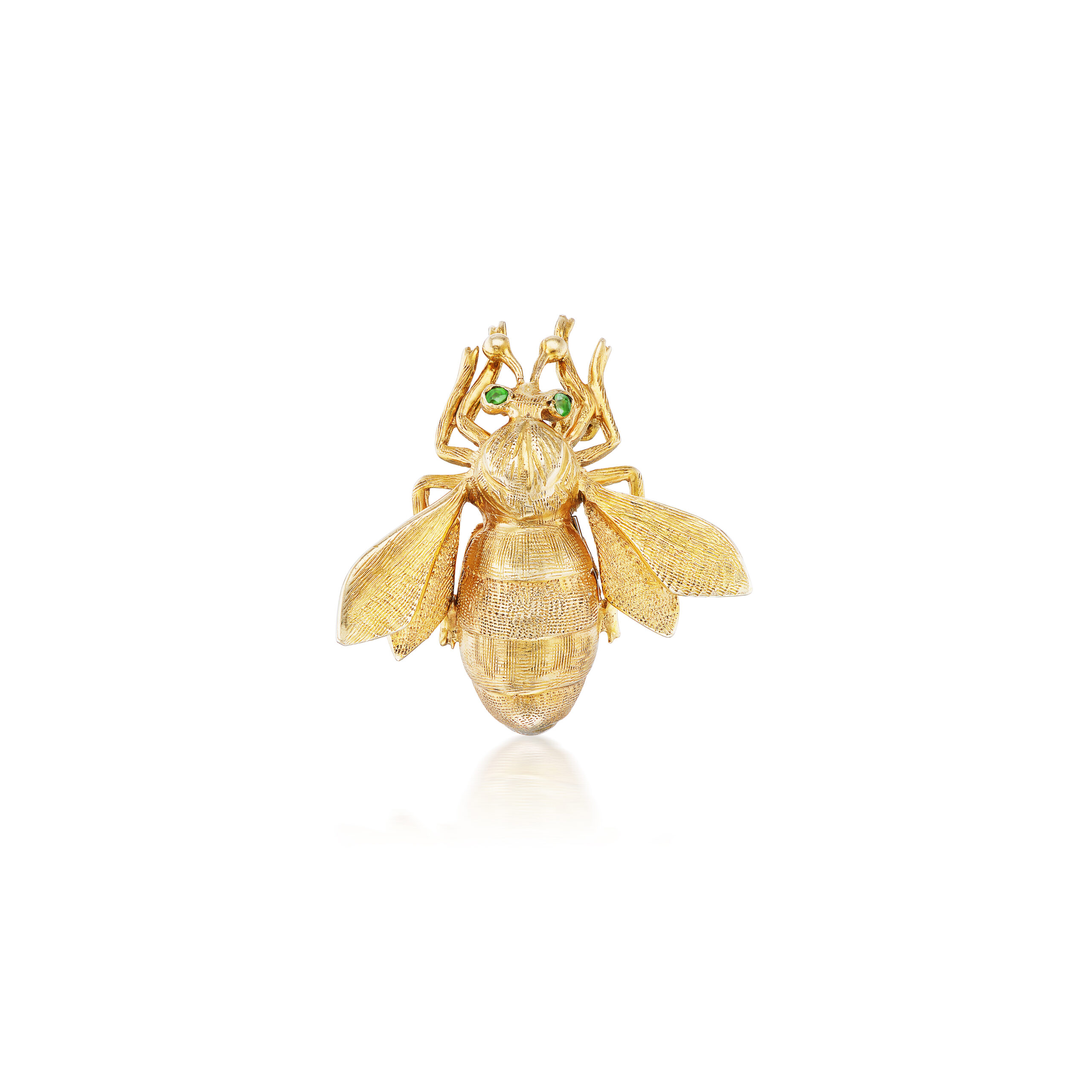
Apis-Verdi
What are some of your accomplishments as a jewelry designer?
As a designer I feel accomplishment every time something materializes from a simple idea into an actual thing. Generally, however, I feel enormous accomplishment when I overcome a technical obstacle either setting a stone or working the proportion of a link and find evidence that my father encountered similar problems. Sometimes we solved them the same ways and sometimes we choose different solutions, but it is an amazing connection to a man no longer here to see that we’ve walked the same roads.
Who are some of your favorite fashion designers?
Georgio Armani, Ralph Lauren, Alicia Mulgatti, Zac Posen, Marsell, and original Alexander McQueen.
Where can readers buy your jewelry?
Our designs are available in some exclusive spa retreat venues and soon will be online at our website You can sign up for the mailing list to be the first to know when we launch. Additionally, the design studio is available by appointment in Tuxedo Park, New York, where I produce the prototype designs in my cedar studio overlooking Tuxedo Lake. Guests can visit the Studio Teahouse, the Lapidary Treehouse, and the Polishing Greenhouse,
How long have you worked as a jewelry designer?
I have been a jewelry designer for 42 years; but I have worked as one for the past 5 years.
What advice do you have for aspiring jewelry designers? Just do it. Look at jewelry, go to the Met, visit exquisite shops, look at what your friends want to show you, look at shapes and explore their flow and incorporate the shapes of life in your art. You have the wax- make it move.


